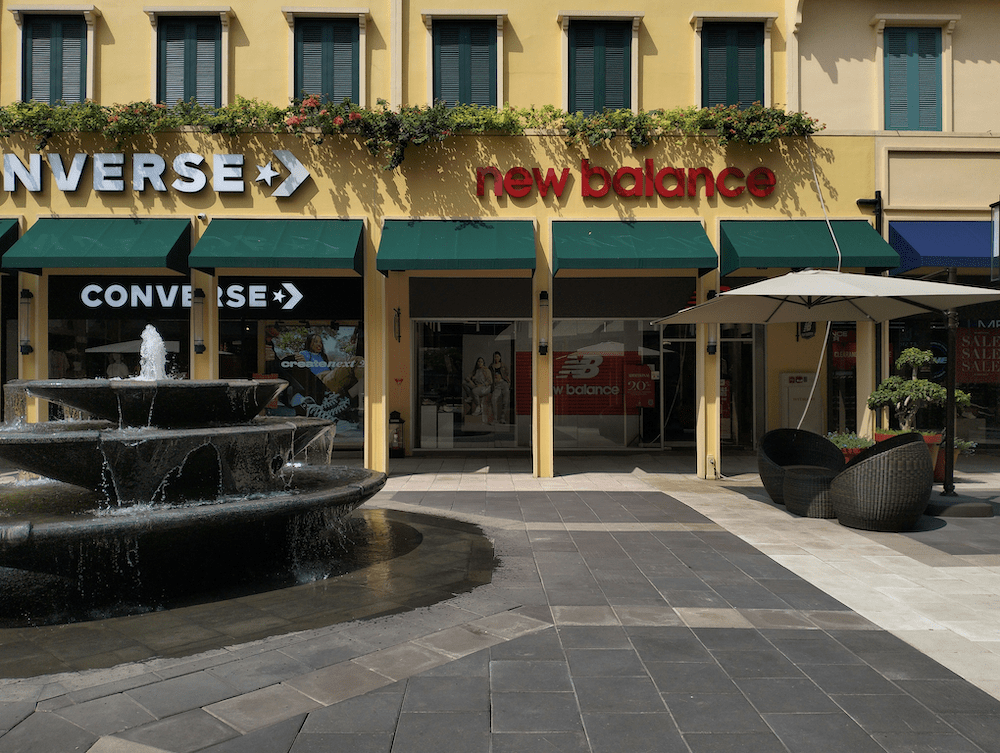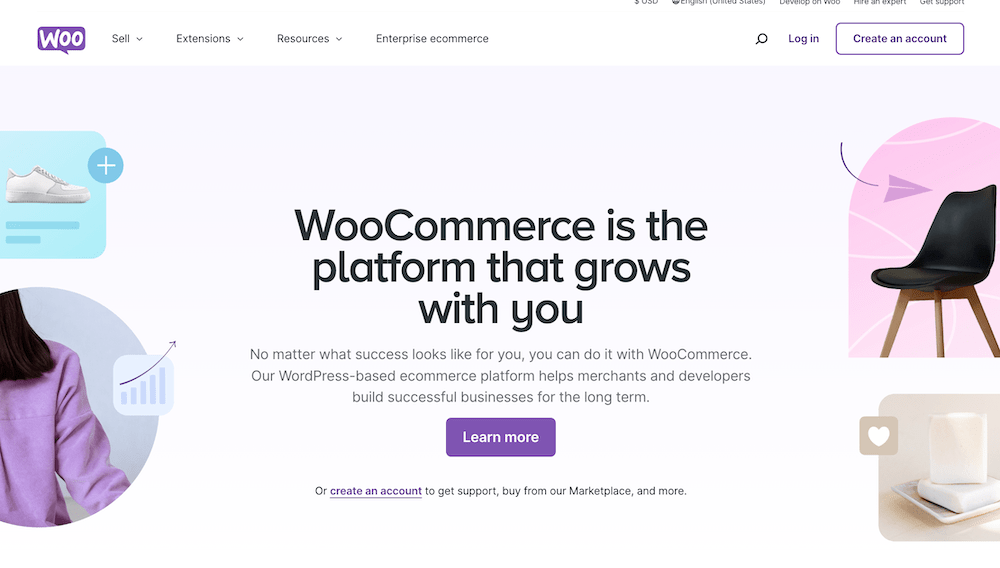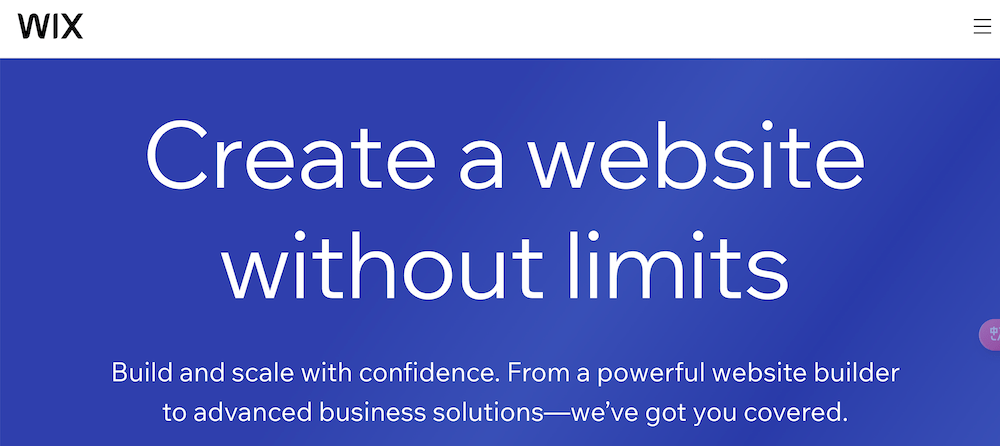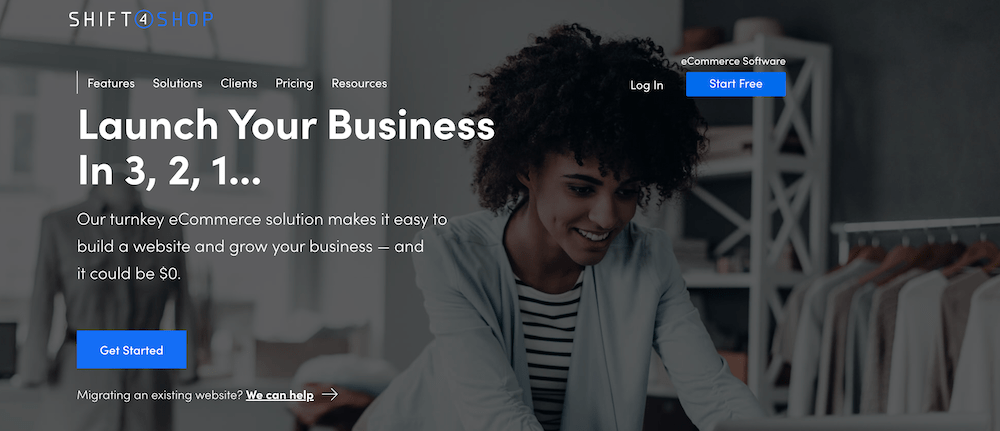
Marketing
How to Run a Successful Valentine’s Day Promotion for Your Clothing Store?
Valentine's Day extends beyond the realm of simple pleasures like chocolates and flowers. For clothing retailers, it presents a prime...
How to Start an Outlet Clothing Store?
Business Kick-Starter Guides

Do you have a passion for selling clothes but need help on how to launch a store? Opening an outlet clothing store can be quite a successful move.
This article will walk you through the fundamental procedures on how to launch an outlet fashion store and offer you guidance on how to achieve your business goals by covering a wide range of topics - from helpful tips like choosing the right fashion products to sell to marketing advice on how to promote them, and much more.
Alright, let's get started.
Outlet stores are shops that sell name-brand goods at significantly lower costs. Usually, they do this by clearing out excess inventory or merchandise from previous seasons.
Businesses can access cost-conscious customers and move merchandise more effectively by opening an outlet store. These shops give business owners a fantastic chance to reach a wider audience, establish a steady stream of sales, and offer their goods to new consumers.
Check out: How to start a clothing pop-up store?
Although they are similar to conventional stores and represent a significant portion of the retail space, outlet stores cater to distinct customer needs and shopping preferences. Both of them can sell the same exact products, but their approaches to pricing and inventory can vary.
Pricing: One distinguishing feature of an outlet store is its capacity to offer goods at deeply discounted rates, typically ranging from 25% to 70% off the going rate. In contrast, ordinary retailers offer merchandise at suggested retail prices that reflect current trends and consumer preferences.
Inventory: Outlet stores usually provide previously unsold products or merchandise from the previous season. On the other side, regular stores usually prioritize showcasing new collections, often with a higher price tag than items available in outlets.
Experience of shopping: Unlike ordinary retail stores, which stock a lot of the newest styles and names, outlets focus mostly on sales promotion methods and encourage customers to look for the best deal possible.
Location: Regular stores can be found in regions that offer a large number of products, like shopping centers or main streets, but outlet stores are usually found in outlet malls, which are located in the outer regions of cities or established towns.
Opening an outlet clothes store can be super advantageous if done correctly. Here’s a step-by-step guide on how to open an outlet clothing store.
Any potential outlet clothing store needs a well-researched business plan in order to succeed.
Your strategy should include your business goals, the market you want to target, the competition, and the anticipated financial outlook.
Here’s how to do it:
| Strategy | Description |
|---|---|
| Make your business goal clear | Choose whether your outlet store’s goal is to sell non-branded garments at low prices for common consumers or luxury products at clearance prices. This will establish the kind of audience to be reached and the place it would hold in the market. |
| Short-term vs. long-term | Be specific when describing your long-term objectives, such as growing your inventory, launching new product lines, or opening new shop locations. Be succinct with short-term goals like store opening times, achieving initial sales, and running promotional offers. |
| Operations strategy | Describe how your objectives will affect daily operations, such as price policies, stock control, and replenishment schedules. Ensure your goals align with the operational functions you intend to implement. |
| Financial forecasting | Plan how your goals will impact expenditures, costs, and revenues to ensure your store’s overall financial stability. |
Having a clear target market is essential when starting an outlet clothing store. You should ascertain the age, gender, income, and purchasing patterns of potential customers before focusing your marketing efforts.
Think about who usually shops at outlet stores: mainly customers who are more frugal with their money and look for high-quality goods at lower costs.
Examine the current fashion trends in your target location and pay close attention to how people are purchasing various goods.
For example, Google Trends can help you figure out what people are searching for the most on Google in the country you’re planning to sell.
On top of that, you can ask your targeted customers for feedback to find out about their demands as possible customers and whether they are willing to make a purchase.
Research your competitors and learn about their strengths and weaknesses. You can do this by comparing other clothing outlets’ product selection, product prices, marketing strategies, and customer service.
This can help you identify critical success elements you can incorporate into your business plan that might show up to be game-changing for your store.
Create a financial strategy to project the costs of financing your clothing outlet store.
Calculate how much money you’ll need to launch and maintain your store until it becomes a successful enterprise.
Here’s a loose financial plan you can follow:
Calculate your costs
Estimate the expenditures associated with starting your business, such as:
Examine your financial options
Use these crucial steps when doing a thorough evaluation of the market and choose which clothes category is best for your store:
Pay attention to product trends
Be constantly updated on fashion trends and customer preferences. If your store is ahead of the curve, it can quickly adjust and take advantage of new opportunities.
Establish the USP (unique selling proposition)
What distinguishes your store from the competition? Your USP should highlight the benefits or characteristics that make your clothing brand stand out from the competition.
This could be a unique fashion product, a cutting-edge offering, or a compelling brand identity that appeals to your target market.
Determine market size and growth opportunities
Analyze the clothing market’s size you are interested in and future growth potential. Use market research studies, surveys, and client feedback to improve your evaluation.
Being aware of the possibilities for growth can help you make the right choices.
Create a practical report
Provide your results in a clear and concise report that contains relevant data, visual aids like graphs and charts, and helpful recommendations.
Consistently review and make adjustments
It’s critical to periodically examine and update your fashion products due to market changes. Keeping your market analysis current can help you stay competitive and modify your strategy to suit market changes.
If you’re opening a physical outlet store, then the location of the store is a crucial factor to consider since it will heavily impact the success of your business. Your store’s location must be very noticeable and enticing to your target demographic.
Here are the most important tips to take into account:
Examine the surroundings
The anticipated foot traffic volume, the site’s location, and accessibility concerning other retail establishments are essential considerations. Being close to retail districts or other business hubs could boost business.
Evaluate the terms of the lease
Decide on agreements that will satisfy your store’s goals and demands while being financially viable.
For example, closely examine the lease’s length, consider the terms regarding a potential rent increase, and any additional fees for maintenance and utility costs.
Make a layout for the store
Your store’s layout must be welcoming to encourage visitors to purchase there. It should create a welcoming atmosphere to encourage visitors to make purchases. This involves providing clear signage and displaying merchandise in a visually appealing manner.
Check out: Best window display ideas
In case you choose to open an online outlet store, then you’ll have to build a well-performing website.
You’d need to create a visually appealing site but also verify that it is SEO-friendly, responsive, and accessible on mobile devices.
You can do this by using user-friendly eCommerce platforms that can accommodate varying degrees of web-building skills.
For instance, Shopify provides all the tools required to develop an engaging website without the need for technical expertise, making it an ideal all-in-one solution for novices.

On the other hand, WooCommerce is perfect for WordPress devotees because it offers greater customization options and is yet user-friendly enough for novices to pick up with plenty of help.

Wix makes website creation even easier by requiring very little skill to produce a polished website.

Finally, Shift4Shop is a strong substitute for businesses looking for versatility because of its many built-in capabilities.

To turn visitors into devoted customers, give top priority to a flawless buying experience on any platform you select.
Maintaining positive relationships with suppliers is essential to guaranteeing a steady supply of high-quality products at competitive prices.
Look up and choose vendors
Find clothing vendors that deal with the goods you plan to offer. Verify their reputation, the caliber of their products, and the costs associated with those products.
Collaborating with several suppliers is also advisable to prevent interruptions in the supply chain.
Discuss and agree on conditions
When managing your supply chain with your partners, consider the following factors: delivery conditions, payment terms, and price.
Establish agreements that will shield against conflicts that could impede the efficient operation of the supply chain so that they are resolved before they arise.
Continue to communicate effectively
Since supplier relationships necessitate cautious handling of potential future issues, ensure that you and your suppliers provide all the information required to establish future arrangements.
Make it a practice to regularly check your stock levels to prevent scenarios when you run out of popular products.
Effective marketing techniques are crucial for attracting customers and, consequently, for growing brand loyalty. Developing a comprehensive marketing plan that incorporates online and offline tactics will be crucial.
Online advertising
Offline advertising
Adhering to business regulations is essential for your outlet apparel store to operate lawfully and avoid illegal issues.
Recognize local laws
Learn about the local regulations that apply to your business, such as employment requirements, zoning ordinances, and health standards. If necessary, apply for licenses and permissions.
Adopt correct accounting procedures
In addition, your store should keep accurate records of its financial transactions and ensure that it complies with tax laws. Experts, such as accountants, can be hired to handle financial and tax-related matters.
Protecting customer data
Finally, ascertain that the use of personal data complies with all applicable data protection legislation, such as the GDPR for Europe-based businesses. After that, make sure that client privacy and data are safeguarded properly.
BrandsGateway is a dropshipping and wholesale supplier that sells authentic luxury designer clothing. Therefore, it can help you open both an online and offline clothing store.
If you choose to open an online outlet store, you can use BrandsGateway’s dropshipping services.
If you choose to start an offline store, you can explore BrandsGateway’s wholesale service.
Key characteristics:
How to buy wholesale with BrandsGateway?
How do you start dropshipping with BrandsGateway?
When strategically and appropriately executed, opening an outlet store for clothes can surely be profitable.
Knowing how outlet stores differ from regular stores will help you target clients looking for high-quality products at lower prices. Establishing your store requires several critical steps, including creating a great business plan, determining your target market, and establishing strong supplier relationships.
Your outlet clothing store has a great chance to succeed in today’s cutthroat retail environment by accomplishing your business objectives with the correct planning and analytics.
What is dropshipping?